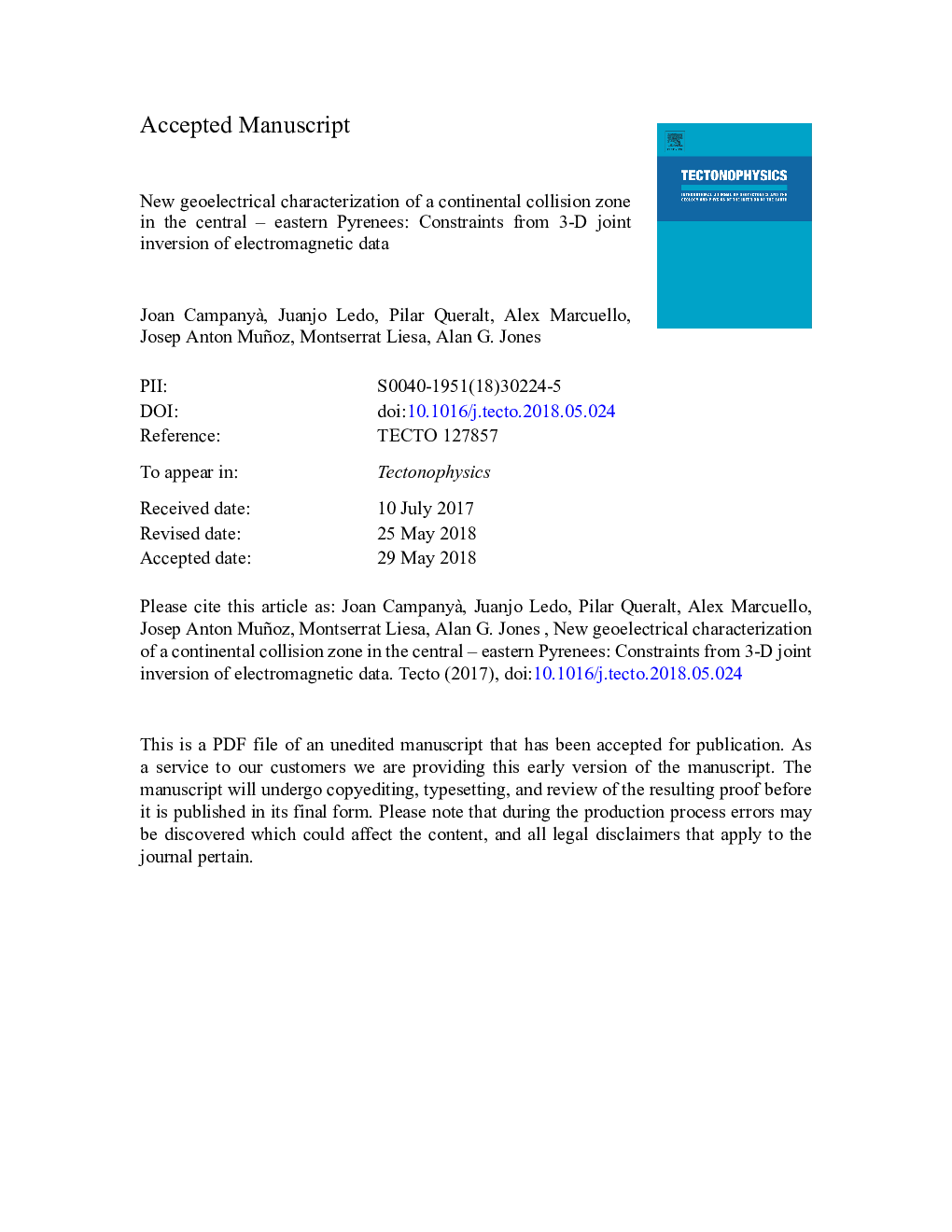| کد مقاله | کد نشریه | سال انتشار | مقاله انگلیسی | نسخه تمام متن |
|---|---|---|---|---|
| 8908633 | 1636673 | 2018 | 46 صفحه PDF | دانلود رایگان |
عنوان انگلیسی مقاله ISI
New geoelectrical characterization of a continental collision zone in the Central - Eastern Pyrenees: Constraints from 3-D joint inversion of electromagnetic data
دانلود مقاله + سفارش ترجمه
دانلود مقاله ISI انگلیسی
رایگان برای ایرانیان
کلمات کلیدی
موضوعات مرتبط
مهندسی و علوم پایه
علوم زمین و سیارات
فرآیندهای سطح زمین
پیش نمایش صفحه اول مقاله

چکیده انگلیسی
Continent-continent collisions are responsible for the formation of large mountain ranges like the Himalayas and the Alps and play a primary role in the development of the continents. The continental collision between the Iberian and European plates during the Alpine Orogeny resulted in the formation of the Pyrenees. In this study new electromagnetic data from the Eastern Pyrenees were complemented with older data from the Central Pyrenees, constraining the physical and geological processes at the eastern end of the Pyrenean mountain range. The electrical resistivity distribution beneath the Central-Eastern Pyrenees was characterized by means of three-dimensional (3-D) joint inversion of three electromagnetic datasets: (1) the MT impedance tensor (Z), (2) the geomagnetic transfer function (T), and (3) the inter-station horizontal magnetic transfer function (H). The main finding was the non-continuity to the east of the major conductive anomaly observed previously beneath the Central and West-Central Pyrenees related to partial melting of the Iberian subducted lower crust. Lower amounts of water (related to the presence of muscovite and biotite) in the subducted lower crust beneath the Eastern Pyrenees were suggested to explain the lack of partial melting in this part of the mountain range. The electrical resistivity model also revealed higher electrical resistivity values for the lithospheric mantle beneath the Eastern Pyrenees than beneath the Central Pyrenees, thus supporting the hypothesis of an heterogeneous Iberian plate inherited from the Variscan Orogeny. A less clear signature was the lateral variation along the strike direction of the lithosphere-asthenosphere boundary beneath the Eastern Pyrenees (relatively flat, between 110â¯km and 140â¯km depth) and the Central Pyrenees (north dipping, between 80â¯km and 120â¯km depth beneath the Iberian Plate and between 110â¯km and 160â¯km depth beneath the European plate), supporting the hypothesis of a missing lithospheric root beneath the Eastern Pyrenees.
ناشر
Database: Elsevier - ScienceDirect (ساینس دایرکت)
Journal: Tectonophysics - Volumes 742â743, 13 September 2018, Pages 168-179
Journal: Tectonophysics - Volumes 742â743, 13 September 2018, Pages 168-179
نویسندگان
Joan Campanyà , Juanjo Ledo, Pilar Queralt, Alex Marcuello, Josep Anton Muñoz, Montserrat Liesa, Alan G. Jones,